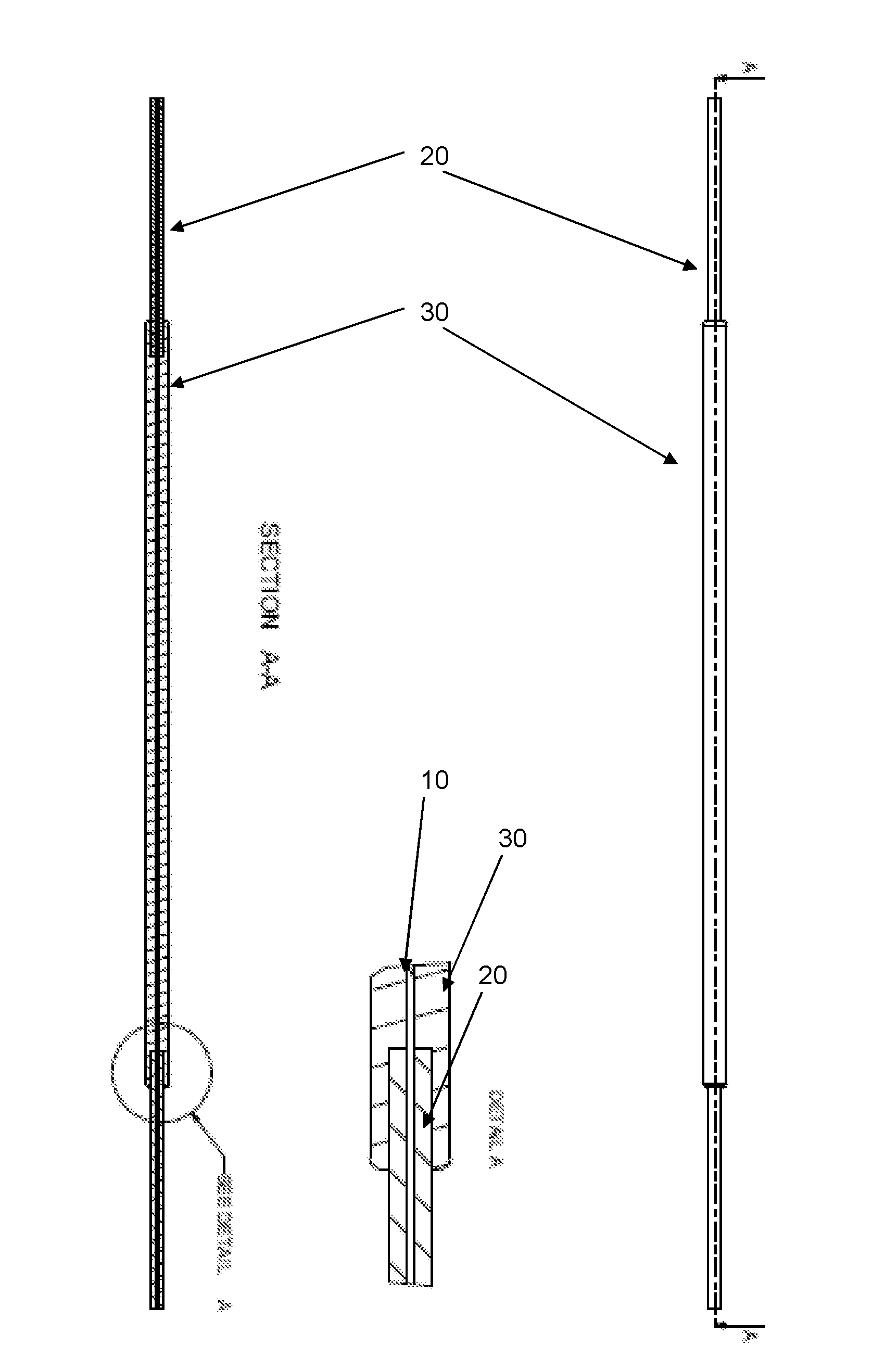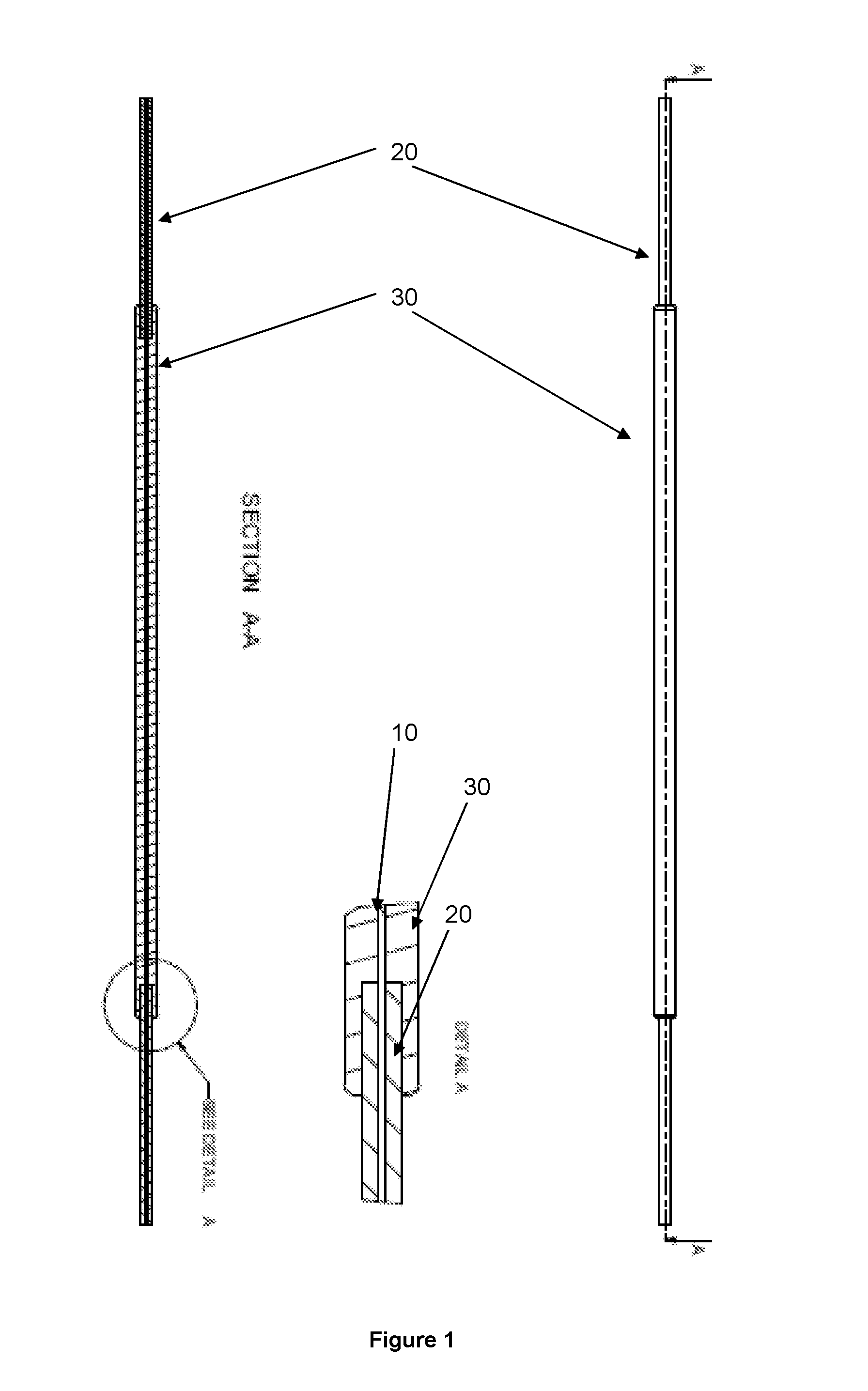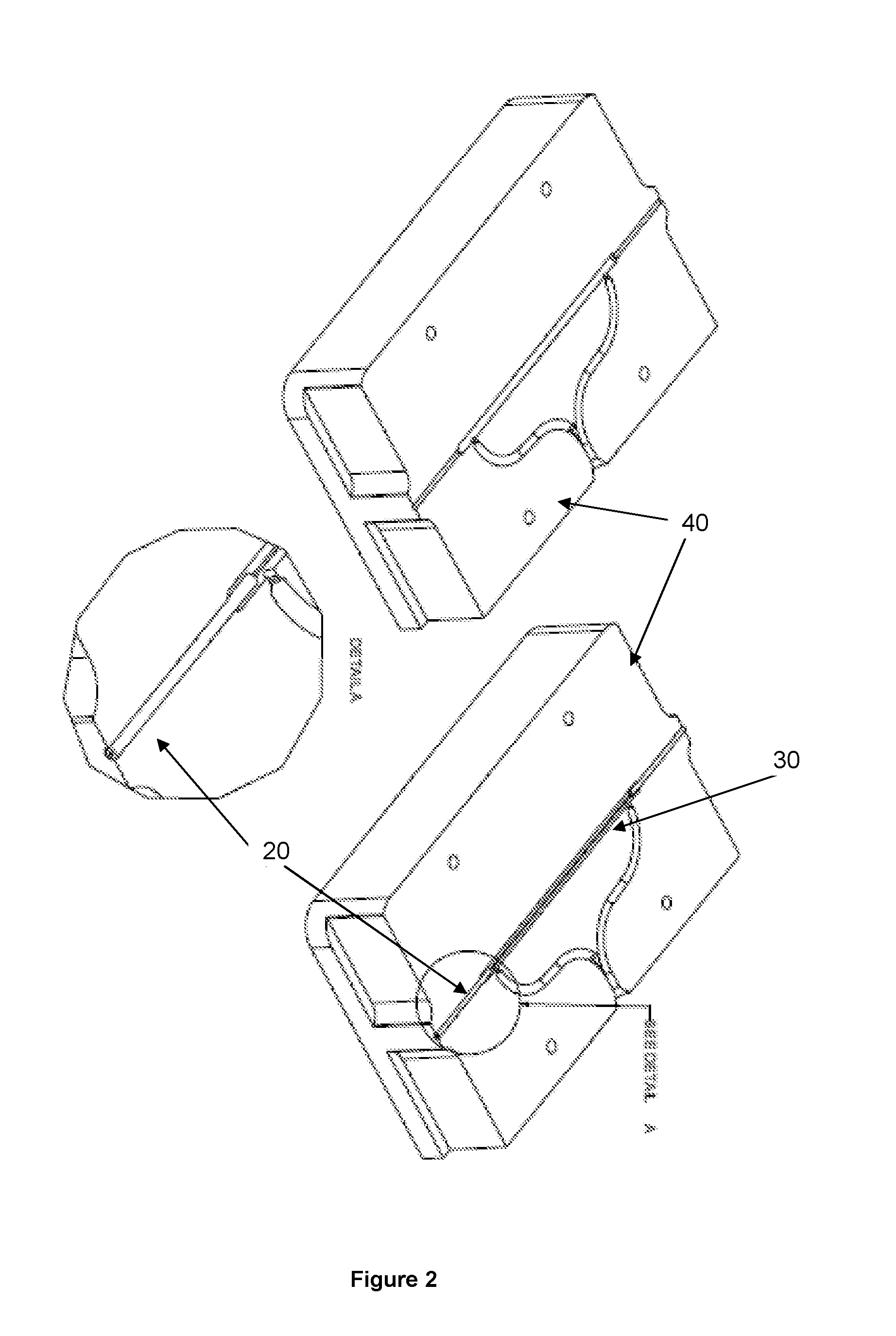Capillary assembly useful as connecting capillary
a capillary and assembly technology, applied in the field of capillary assembly, can solve the problems of affecting the robust use of nano-flow lc at ultra high pressure, the thin wall thickness is too fragile for normal use and handling, and the limiting element of the solvent tubing, etc., to achieve the effect of flexible and robust capillary assembly, and facilitate the use of fragile column materials
- Summary
- Abstract
- Description
- Claims
- Application Information
AI Technical Summary
Benefits of technology
Problems solved by technology
Method used
Image
Examples
Embodiment Construction
[0040]The arrangement as shown in FIGS. 1 and 2 comprises a silica capillary with sleeves. The molding material comprises a plastic material, for example, a thermoplastic material, such as polyamide and polyurethane based MacroMelt™. The plastic material is chosen for being formed with a forming tool comprising a mold. In some embodiments, the plastic material can be melted completely and afterwards cooled down to ambient temperature. Therefore, the plastic material can realize a chemical bond with the outer surfaces of the capillary and sleeves.
[0041]Specifically FIG. 1 shows a fused silica capillary (10) ˜360 μm OD with PEEK or steel sleeves (20) at each end and resin (30) that covers the central part of the capillary (10) including approximately one third of the central end of each sleeve (20). Detail A of FIG. 1 shows the overlap of resin onto the sleeve. Regardless of the material used for the sleeve, typical sleeve dimensions would be an inner diameter of ˜375 μm, length of ap...
PUM
| Property | Measurement | Unit |
|---|---|---|
| diameters | aaaaa | aaaaa |
| inner diameters | aaaaa | aaaaa |
| inner diameters | aaaaa | aaaaa |
Abstract
Description
Claims
Application Information
 Login to View More
Login to View More - R&D
- Intellectual Property
- Life Sciences
- Materials
- Tech Scout
- Unparalleled Data Quality
- Higher Quality Content
- 60% Fewer Hallucinations
Browse by: Latest US Patents, China's latest patents, Technical Efficacy Thesaurus, Application Domain, Technology Topic, Popular Technical Reports.
© 2025 PatSnap. All rights reserved.Legal|Privacy policy|Modern Slavery Act Transparency Statement|Sitemap|About US| Contact US: help@patsnap.com



